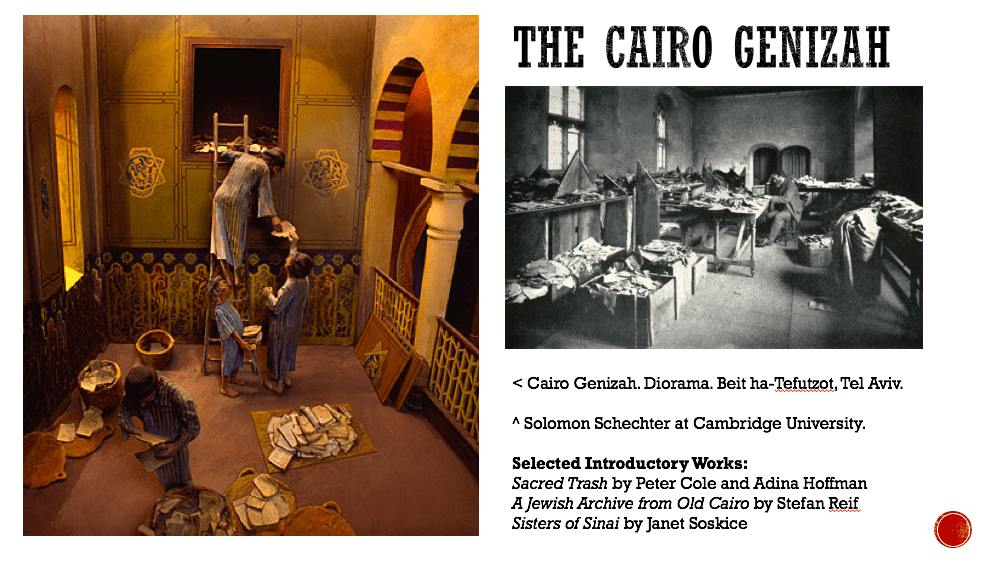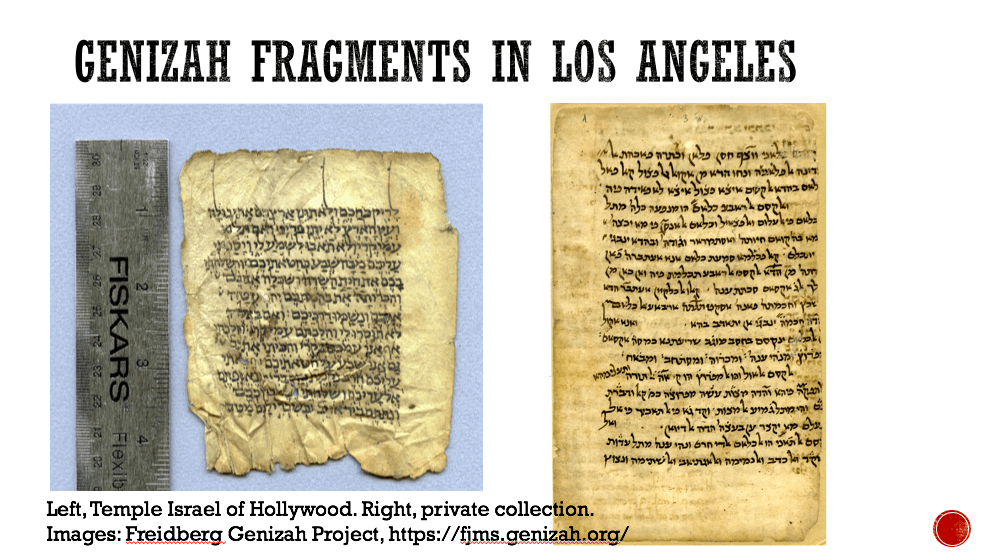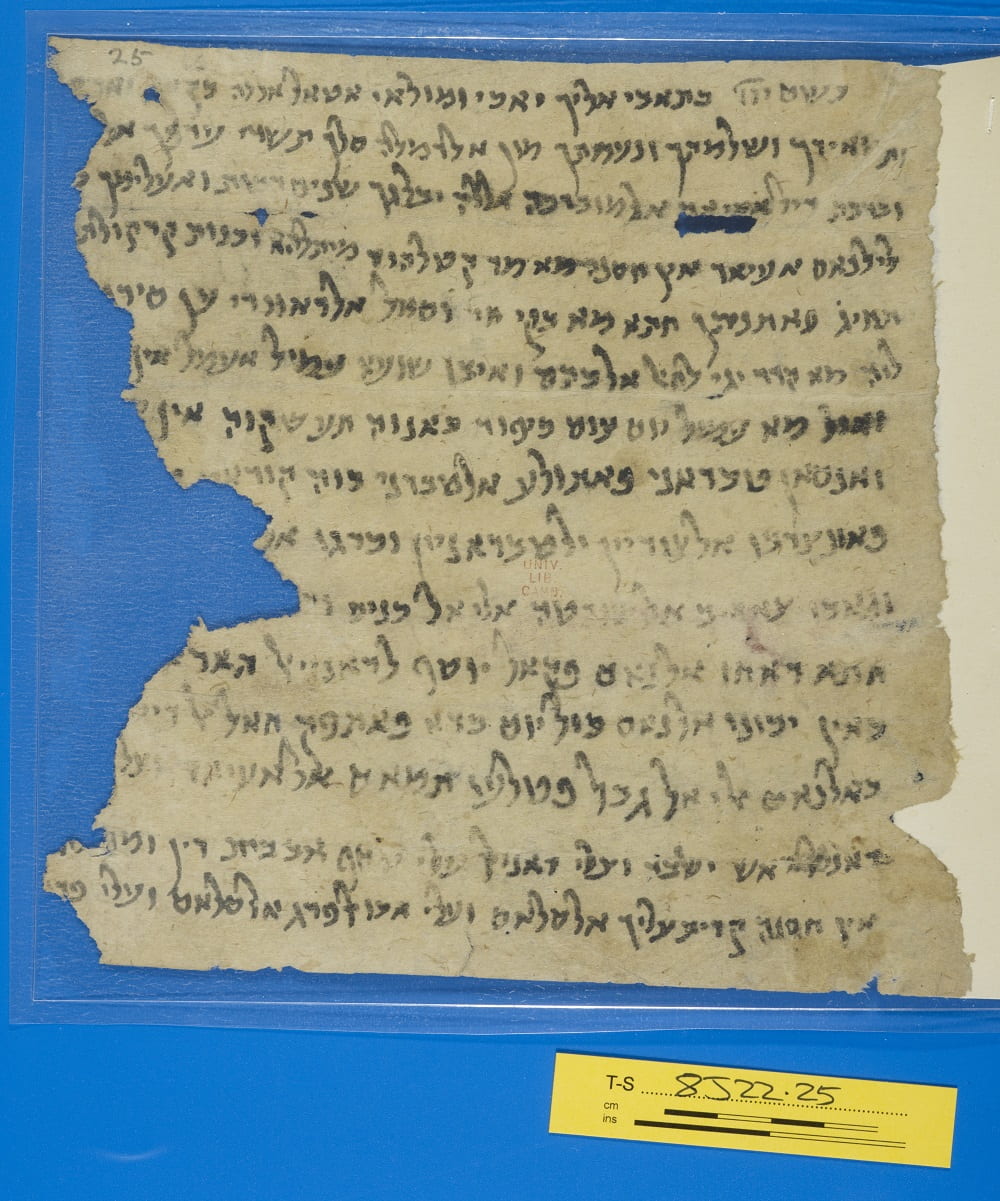
I was sort of rolling my eyes in boredom as I write, for the zillionth time, the “this is what the Cairo Genizah is and why it is both relevant and important for the literature of Spain” paragraph for a lecture I am giving at UCLA next week. And then I was reminded of a talk I gave a few years ago at a conference at Notre Dame, after which a Regius Professor of English approached me and thanked me for taking the time to explain what the genizah was. She had been, prior to her appointment at one of the other universities with Regius chairs, appointed at Cambridge, whose university library houses the vast majority of the Cairene disjecta membra. She told me that she had been to all kinds of medieval talks in which people threw around the word “genizah” but never explained it; the best conclusion she could draw was that “genizah” was some kind of booksellers’ district in Cairo that had been well preserved since the Middle Ages. I was tickled that someone so senior was so gracious and intellectually humble. And ultimately, the memory was maybe not a bad reminder of our responsibilities, especially as we move toward a field of Medieval Studies that is increasingly globalized, of the twin responsibilities to explain our own field knowledge and to really listen, with humility and an openness to learning, as others do the same.




